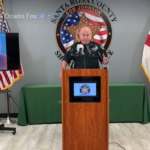If you can’t change the facts, change the public’s perception of the facts.
Anti-gun politicians whose constituents express concerns about crime and public safety respond with the narrative that it’s a gun problem rather than a problem of lawbreakers and criminals, a message that is amplified and reinforced by an accommodating mainstream media. The national media’s hostility towards guns and the Second Amendment is so widespread that a recent Washington Post article that wasn’t markedly anti-gun became the subject of an NRA-ILA grassroots alert.
Over twenty years ago, economist and researcher Dr. John Lott wrote a book on the bias against guns. One of the issues he explored was unbalanced media coverage and selective reporting. “Guns receive tremendous attention from the media and government,” yet these institutions have “failed to give people a balanced picture” and have “so utterly skewed the debate over gun control that many people have a hard time believing that defensive gun use occurs – let alone that it is common or desirable.” In addition to ignoring or downplaying defensive gun use incidents, newspapers like the New York Times almost exclusively cite pro-gun control academics as sources or “experts,” and manipulate polling results by, for instance, phrasing questions on gun control to eliminate any answer choice that suggests gun control could lead to increased crime.
Keeping up with recent changes in technology, Dr. Lott’s Crime Prevention Research Center (CPRC) has now examined how artificial intelligence (AI) chatbots handle queries on guns and public safety issues. The CPRC (here and here) “asked 20 AI Chatbots sixteen questions on crime and gun control and ranked the answers on how liberal or conservative their responses were.” Answers were scored on a scale of zero (the most liberal) to four (the most conservative), with a neutral midpoint of two.



